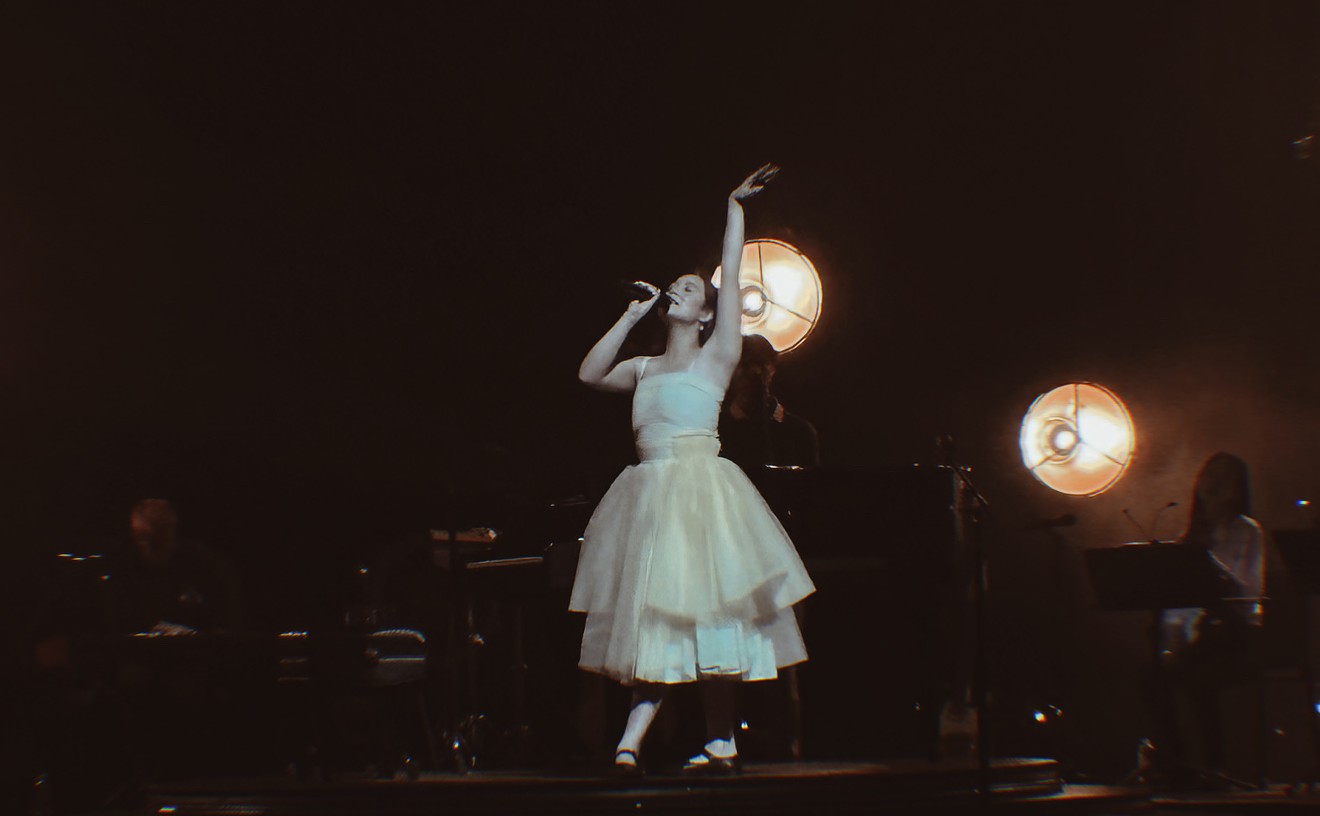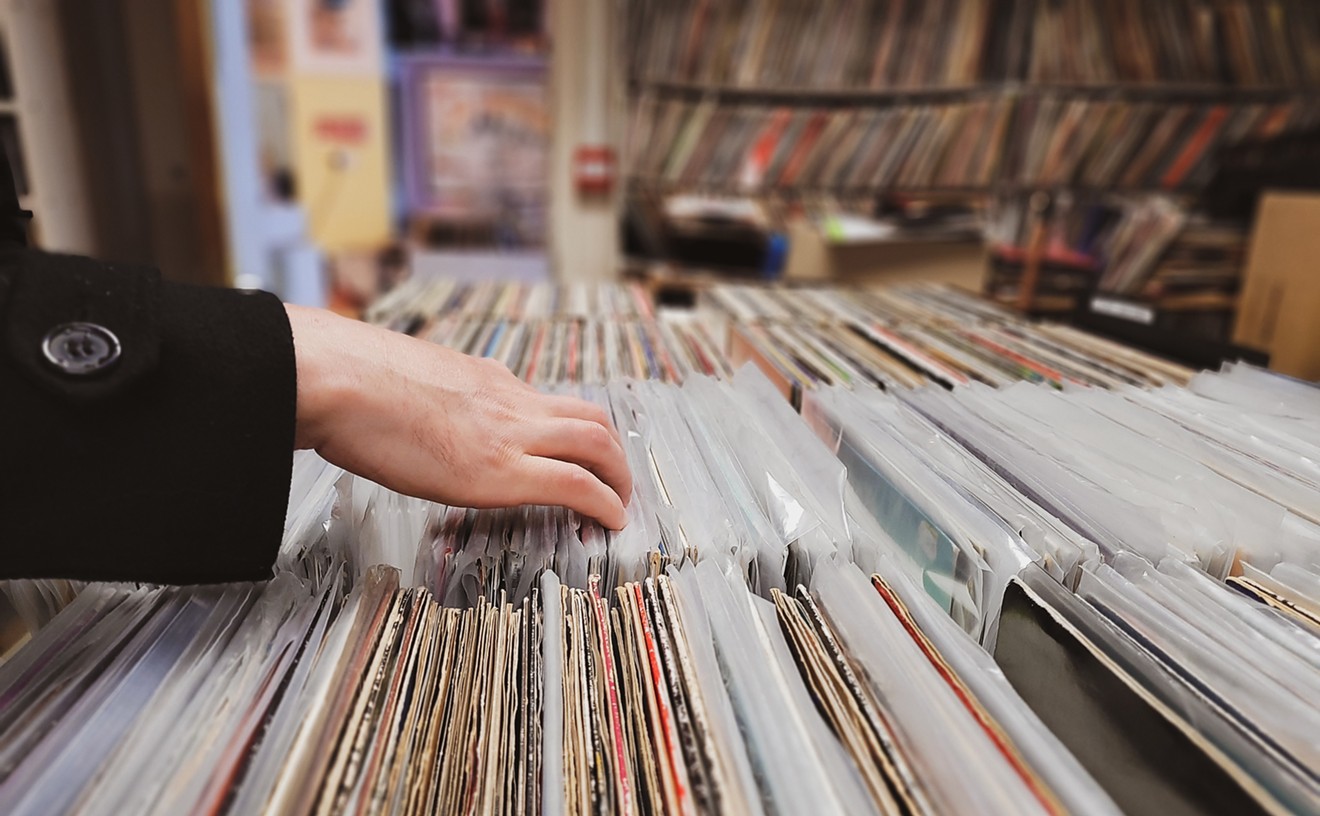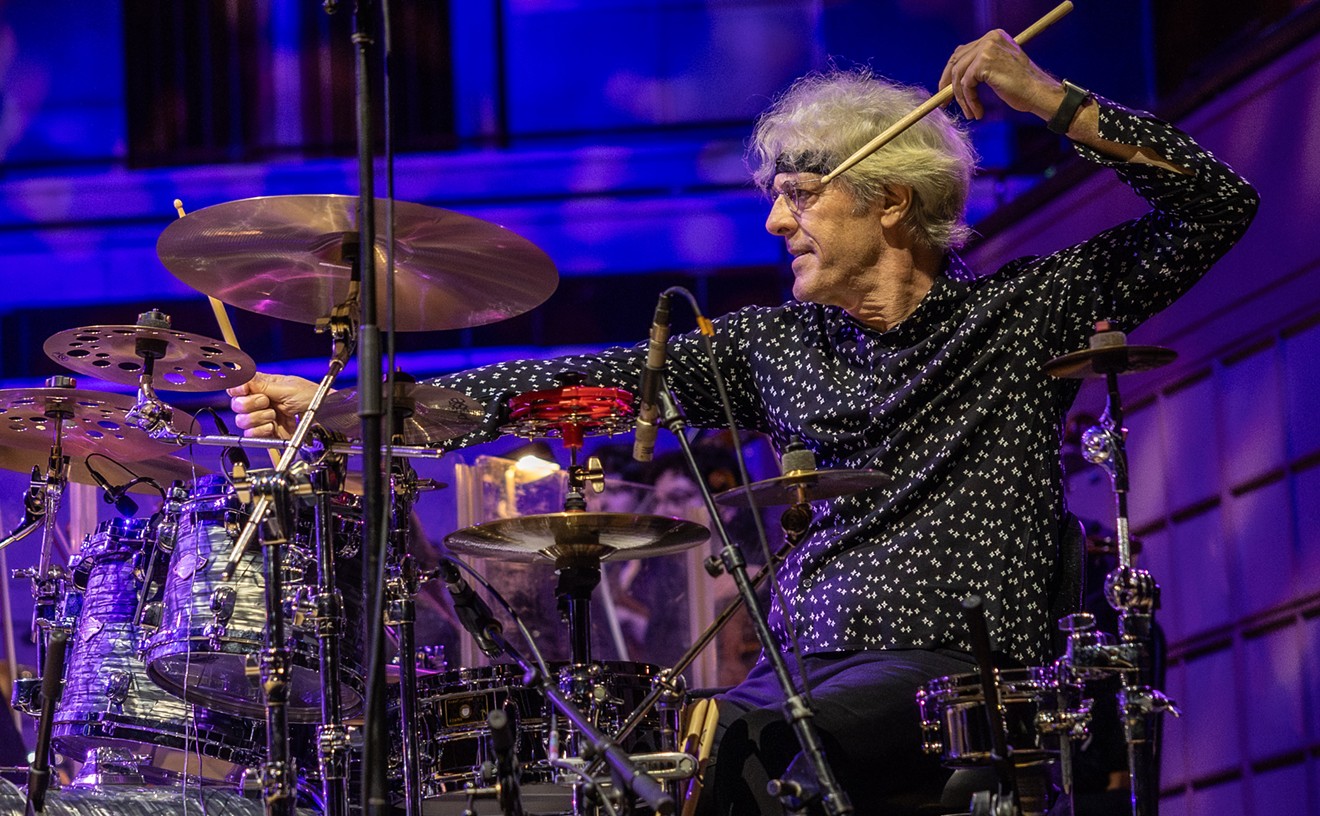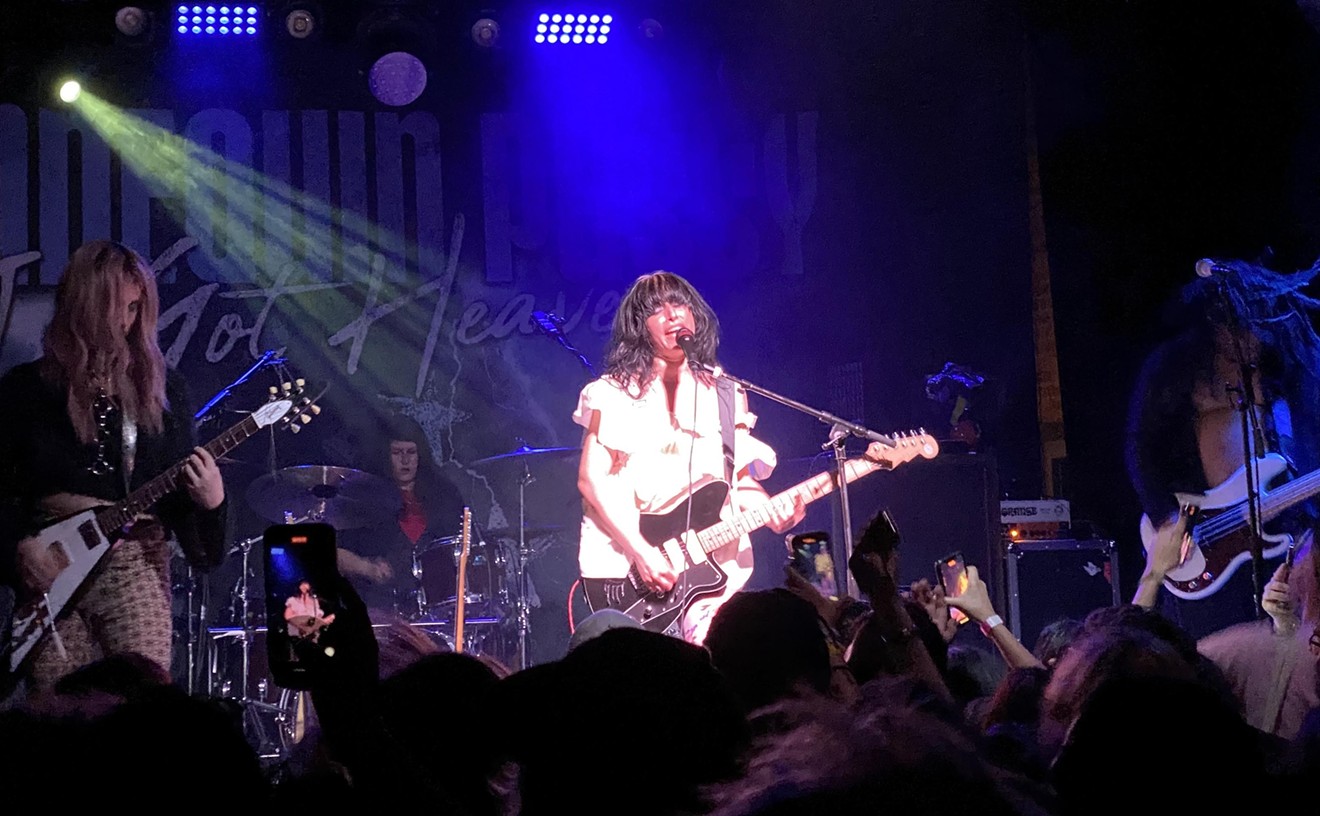Back in 1984, Wilkins was in Dallas to guest-conduct the Dallas Ballet. The downtown Arts District was just taking shape, with the Dallas Museum of Art newly built and the Meyerson Symphony Center being planned, and Wilkins' interest was piqued when the city and the Catholic Diocese announced their decision not to raze the historic Cathedral Guadalupe Church on Ross Avenue. Wilkins had done a lot of performing in cathedrals in Europe and thought the Gaudalupe Cathedral might make a great place for a concert. "I got to thinking about it," he recalls, "and the more I thought about it, the more I realized it would be really interesting to do something; and why not Spanish music?"
The next time he was in Paris, he stopped by the Bibliotheque Nationale to see what it had in the way of Spanish music. He was astonished to find a collection of 10 volumes, published in the 1850s, full of incredibly high-quality music from the baroque era (1600-1750), a period known for its dearth of published music from Spain. "There was no question that if there were things of that quality, there had to be a lot more," Wilkins says. "As I looked at that collection, it was too important, too good not to be part of a much larger body of work."
Inquiries yielded nothing; even Spanish experts told Wilkins they had never heard of most of the 16 or 17 composers in the Paris collection. Wilkins, however, became even more determined: He decided he would go to the source. By then, it was 1988, a year before the Meyerson's scheduled September 1989 opening. Wilkins knew there had been interest expressed in doing some sort of Hispanic-themed performance for that occasion, so he informed one of the women working on the concert hall's opening that he had found this very important music. To do a concert in the Guadalupe Cathedral, he suggested, would be a wonderful addition to the Meyerson's opening festivities that would also draw on the history of the local Hispanic communities. No one was giving concerts in the cathedral at the time, and it would help the important symbol be seen as a part of the burgeoning Arts District. "It seemed to me to be a great statement to make," Wilkins says. "You keep the old with the new."
Wilkins sat down with representatives of the Meyerson opening committee, the Arts District, and the Dallas Hispanic Chamber of Commerce and hammered out funding that could send him to Spain to find music for the concert; he also petitioned the Texas Commission on the Arts for help. As a musicologist, Wilkins knew that many scores published in the 19th century were, in fact, revised and updated versions of what 17th- and 18th-century composers had written; that was why it was necessary to go to Madrid to try to find the original manuscripts. "We had a new body of work," Wilkins says. "We wanted to make sure we were giving the composer his due by playing what he really wrote."
Wilkins had chutzpa. Not only did he have no music, but he had no idea whether the cathedral would work acoustically. "At that point, there was lots of carpet on the floor, and there was no good acoustical shell behind it," Wilkins remembers. "You're never going to know for certain, but I had a pretty good idea. It's a beautiful place, and there's a certain ambience to it." (Today the cathedral is used on a regular basis by many arts groups for a variety of concerts and other events.)
Armed only with a photocopy of one of the masses by Antonio Ripa published in the 19th century, Wilkins flew to Madrid to try to find something that might be a handwritten original. His first stop was the Royal Palace, where he came up emptyhanded. He decided to go to Seville, where the cathedral for which the piece had been written was located. He ended up at the cathedral library, one of three in Seville. The librarian there couldn't find the Ripa piece, but she suggested calling a local organist.
The organist went to another library, the choir library, and returned with a 2-foot stack of file folders filled with music. "He said, 'This is the composer you're looking for--enjoy!'" Wilkins recalls. "I got busy, and in the first 10 or 15 minutes, I found the piece! I compared the original manuscript with the photocopy I had brought. They were very close, but there were several changes: In the fifth measure, there was a substantial insert, and a few measures later there was another substantial insert. It was very important to know why that insert was there...I was delighted to have found the original manuscript, because it proved my point that there were at least some differences between what had been published and what the composer had written down."
There wasn't a full orchestra score in the Seville files, so Wilkins couldn't use it for the concert. But he was convinced one existed somewhere, perhaps in Madrid. He photocopied the priceless Seville parts and went back to the Royal Palace in Madrid, asked for the piece by name, and, lo and behold, it was there--in score version.
Wilkins suspected that there might also be music by other important composers there, and he discovered manuscripts by Francisco Courcelle, maestro de capilla at the Royal Palace for 40 years, and another composer, Jose de Nebra. Wilkins chose several pieces to copy and bring back, along with some pieces he found at El Escorial, the autumn palace of the royal family located about 30 minutes outside Madrid. There he found a number of villancicos--Spanish Christmas carols--and works by the keyboard composer Antonio Soler.
Back in Dallas, Wilkins hired 40 early-music instrumentalists from a local pool of musicians, and the first cathedral concert took place on September 10, 1989, during the Meyerson opening festivities. The cathedral, Wilkins recalls, was standing-room-only. The music was successful, but "the important thing is that the hunches I had were correct," Wilkins says. "I knew there had to be something there. Spain just didn't drop off the map at the end of the 16th century.
"When I looked at those pieces--especially the music of Courcelle and Soler--it was obvious this was important stuff," Wilkins continues. "But until you actually play it, you don't know what the public's going to think; what the musicians are going to think. The response all the way around was very, very positive."
Why hadn't anybody played this music in 200 years? Why was it just sitting there? Wilkins points out that musicology didn't become a respectable science until this century. While the discipline was coming into its own in other parts of Europe, Spain was under the rule of Franco; many scholars fled his dictatorship. It wasn't until Franco died in 1975 that musicologists in Spain--mostly priests--began to feel comfortable doing their work. They had a new generation to educate, so the Spanish early-music movement is only now starting to take shape.
However, Wilkins says, there's nobody else doing what he's doing. "There are in Spain and France today some efforts to work on some repertory, but we are really attacking the masterworks of the 18th century in Spain that have lain dormant for 250 years like nobody else in the world...These works represent perhaps the last major musical discovery of the 20th century, a discovery that adds significantly to the repertory of Western music and has most timely social and cultural implications in the U.S."
After the success of that first concert back in 1989, Wilkins made a commitment to do four more during the following four years while obtaining, editing, and for the first time publishing major orchestral-choral works from his Spanish manuscripts. The Orchestra of New Spain was formed in 1989 to perform these works with period instrumentalists and choir, and its 1996-'97 season--which opens November 21--consists of seven concerts.
In addition to the Guadalupe Cathedral, the orchestra performs at various other venues, including churches, art galleries, and private homes, where it performs music intended for small salons. This season includes a four-concert series at the Santa Clara Church in Oak Cliff. "For the first time," Wilkins says, "a North Dallas-based operation is going to Oak Cliff not just for a run-in, run-out concert, but we're actually establishing a presence and a second home in Oak Cliff, where we think this music has a real tradition and cultural affinity for the people who are part of that community."
Concertgoers at Orchestra of New Spain performances also hear familiar pieces from composers of around the same time; the November 21 concert will include Mozart's "Eine Kleine Nachtmusik." A concert in the spring will feature Nebra, Courcelle, and Haydn, placing the music in its historical context. "By playing Courcelle and Haydn, you're playing composers who were writing pieces at exactly the same time for exactly the same size orchestra and--excuse me--Courcelle was doing things in 1750 that Haydn didn't do until 1770!"
Was Courcelle as good a composer as Haydn? "There is some possibility that the operas of Courcelle are better than the operas of Haydn," Wilkins says. "We don't know that, because we haven't played them yet, but the masses are lyrical in a way the Haydn masses never will be. We haven't found any Courcelle symphonies. I don't think he did any, because the Spanish court was so church-oriented that its composers wrote only for the necessities of the liturgy and the spectacle of opera. There weren't many occasions to use symphonic things. I can't say that definitively, because we're still exploring."
It's still an uphill struggle. "In the U.S., let's face it, universities are very conservative places," Wilkins says. "Professors who have spent their lifetime working on Bach want their students to beef up their own fields of interest, so it's self-perpetuating. Meanwhile, there are literally thousands of manuscripts in Spain--including hundreds of first-class works--waiting to be discovered. I've also got 19th-century things that beg to be played, and we're working on ways to do that."
The Spanish music community and government have been very supportive. Last year, the J.P. Morgan Bank invited Wilkins to Madrid to conduct the 20th-century premieres of several of the rediscovered works in a concert that was broadcast internationally on radio and television. Spanish royalty attended, and several people from Dallas flew there. The Fulbright Commission in Madrid has invited the Orchestra of New Spain there in 1998 to celebrate the commission's 40th anniversary, and there are negotiations under way for a 1998 tour to include London, Exeter, Vienna, and Versailles. The Orchestra is also in negotiations with two major record labels.
Wilkins' research is gaining the notice of both local universities and musicologists throughout the world. "We're doing very first-class research, and the payoff is going to be that, when this stuff goes public, there's not going to be any question about it," Wilkins says. "It's going to be done right the first time, and it will get lots of attention--the attention that this music deserves."
Wilkins acknowledges that he misses 20th-century music, his original calling, and he keeps a hand in it via his American Orchestra of Paris. He did the French premiere of Marvin Hamlisch's "Anatomy of Peace" (premiered here by the Dallas Symphony Orchestra), and he has also done concerts of Copland, Bernstein, and Britten. Wilkins says that it's healthy to keep one foot in the 20th century and one foot in the past, and that it's exciting to be, in essence, an explorer.
"This is what musicology is all about," Wilkins says. "Here you've got me, an American conductor whose career was specializing in 20th-century music and who was commissioning composers of his time, who's now doing the groundbreaking work on Spanish baroque music in Spain!"
The Orchestra of New Spain performs Thursday, November 21, at the East and Orient Gallery, 2901 N. Henderson.










